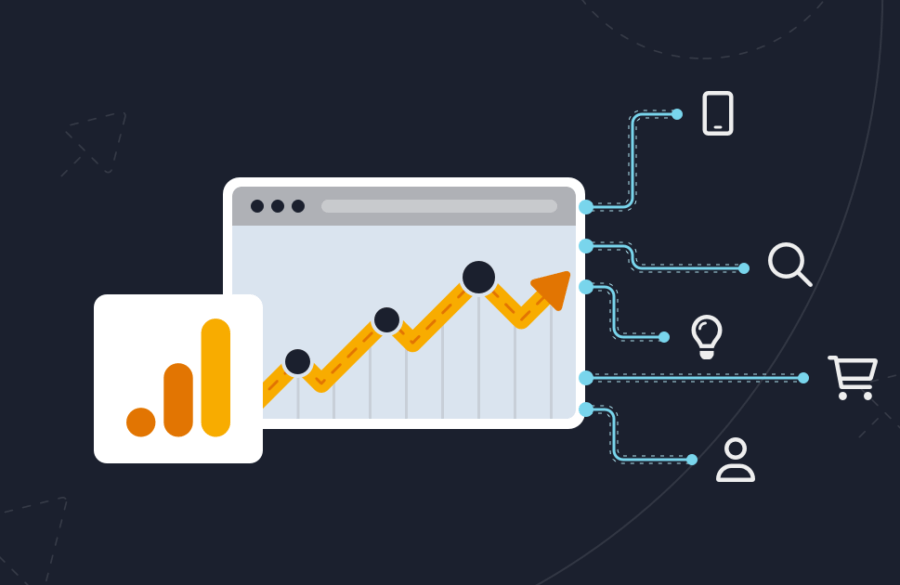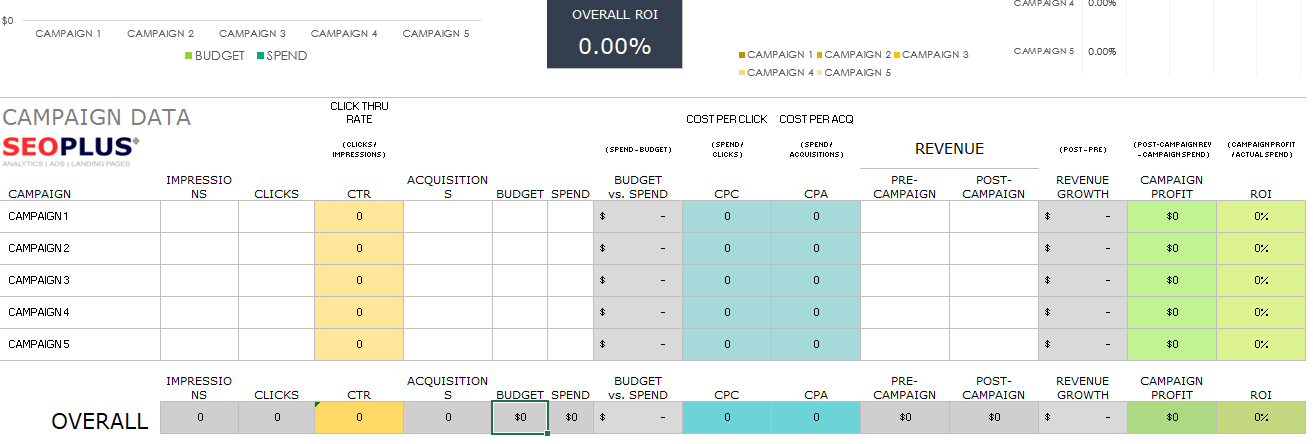|
Table of Contents
• Main tasks
• Distinguishing features
• How does performance-marketing work
•
Main stages of strategy development
•
Indicators for determining efficiency in performance-marketing
• How to choose digital marketing KPIs
Performance Marketing – a direction of marketing that has a clear sales orientation. The work is conducted with an audience that has already formed a demand, which distinguishes it from brand communication image advertising aimed at creating demand.
 |
Main tasks
The main feature of performance marketing is its focus on concrete and measurable results: volume of profits, quantity of sales. The main task of this direction is to understand what tools and channels allow to achieve the maximum result for a certain type of business, to think over and implement a complex strategy for application and development. Internet promotion in performance marketing implies an emphasis on business indicators (ROI, CPA, etc.), and not on the classic evaluation of the result by the number of clicks. This allows to concentrate investments and efforts on channels that give sales, and not only transitions to the advertiser's resource. As a rule the efficiency of channel is estimated by the return of investments from advertising. Proper use of performance-marketing helps to ensure maximum profits at minimum costs.
Distinguishing features
Result-oriented. Performance-marketing can encourage the user to perform a specific action, for example, to purchase that or another product.
Measurable. The effectiveness of the channels used is tied to the digitized business indicators of the organization.
Relevance. There is an opportunity to influence the indicators of the promotion campaign in real time. As a rule, this is required to increase their efficiency.
Result-based payment. Performance-marketing agencies are usually paid for performance of planned indicators (KPI).
How does performance-marketing work
Performance-marketing uses standard advertising channels and online marketing tools. Here are the main ones:
search ads. According to statistics, the majority of agencies that work according to the Performance concept focus their main efforts on this particular direction;
promotion in social networks. The choice of the site is made taking into account the social situation, age audience, interests and other parameters;
email marketing. The tool is most effective for long sales cycles, promotion of online stores, stimulation of repeat purchases. The efficiency is strongly influenced by the quality of the base and the letters themselves;
native advertising. The advantage of the tool is the absence of associations with ordinary advertising, which increases the degree of trust of potential clients. In most cases, native content takes the form of informative articles or videos;
viral advertising. It represents content that arouses the interest of users and provokes them to large-scale discussions, reposts and other actions that contribute to the spread of viral material (graphics, videos, etc.).
Although used advertising sources are the same, the difference between performance marketing and regular online promotion is the synchronization of the channels and tools used. The approach implies the development of a single complex strategy with clear digital indicators and with regard to the advantages of different channels involved, which will allow to achieve the common goal. Marketers exclude channels that do not give results.
Main stages of strategy development
Definition of goals and objectives. The general goal of any business is to increase sales. More precise goals and tasks are determined depending on the scale and direction of the business, corporate strategy and mission, regionality and other individual parameters.
Analytics. Specialists in the field of performance-marketing study in detail the business of the client, the specifics of the services provided or the goods offered, the state of marketing at the moment (productivity, reach, marketing tools used, etc.). Audit of the competitive environment, advertising campaigns, positioning and marketing activities of competitors, is also carried out.
Strategy development. At this stage, there is a detailed development of the performance strategy, the selection of traffic attraction channels, tactical tools, optimal advertising materials, determination of the most effective methods of establishing contacts with Targeted Search Advertising (TSA).
Compilation of the media plan. On the basis of the existing strategy, a plan of advertising tools and channels is created. It includes detailed instructions, when and where advertising will be placed, what budget should be allocated to that or another channel.
Strategy optimization and efficiency assessment. After the launch of the campaign, specialists begin to monitor its effectiveness, analyze the complex achievement of the goal, the effectiveness of each channel. According to the results of this assessment, changes are made to the media plan and strategy. This is done with the purpose of eliminating ineffective tools, as well as optimizing those that give the desired result. The more information about TSA, the higher the effectiveness of the marketing strategy.
Indicators for determining efficiency in performance-marketing
Performance indicators (KPI), as a rule, allow to estimate such parameters as:
Traffic. It shows the number of visits, clicks or views for a certain period of time. Traffic cannot reflect the quality of these actions, so it is considered a fairly general indicator. But it allows you to track declines/rises and analyze their causes. As a rule, attendance is monitored daily, weekly or monthly;
Conversion ration (CR). It shows the ratio of the number of effective visits (in which the required action was performed - call, purchase, etc.) and the total number of visitors. This ratio allows to analyze the effectiveness of a certain channel in terms of converting regular visitors into buyers/customers;
Bounce rate (BR). It allows to identify problematic areas of the website or a landing page by tracking where was that the visitor left. By monitoring BR, you can make the content more relevant to the requests of the audience and reduce the percentage of rejections (leaves from the site of potential clients);
Cost Per Click (CPC). This indicator means the amount that the advertiser must pay to a specific advertising source for each click on his ad. This cost is influenced by the region of promotion, the direction of the business, competitiveness of the search phrase and other factors. To calculate CPC, divide the total sum that was spent on advertising by the number of clicks;
Cost Per Action (CPA). CPA indicates the price for the necessary action (purchase, call, subscription, etc.) performed by the client. The main difference from CPC is that you calculate the cost of desired action & not th site visit;
Cost Per Order (CPO). This metric represents the average cost incurred by a company to generate one order or sale. It is calculated by dividing the total marketing expenses by the number of orders received within a specific period. This is the amount that the company spent on attracting one client. The lower this indicator, the higher the profitability of investment in marketing;
Return on Investment (ROI). This digital marketing KPI helps to determine the profitability and effectiveness of advertising campaigns. ROI = (profit, which is obtained as a result of marketing activity — costs of marketing activity) / costs of marketing activity x 100%;
Cost per Lead (CPL). This coefficient can be calculated as the ratio of expenses on a specific advertising channel to the number of leads received from it for a certain period of time;
Lifetime value of the client (LTV). This KPI indicates total profit from a client to the company. To determine LTV, subtract the costs of attracting and subsequent retention of the client from the income received from that client. LTV is a critical KPI in marketing because it helps businesses quantify the long-term impact of their marketing efforts and investments;
Average Order Value (AOV). Sometimes its referred to as an "average check". It represents the average cost of one order. To determine this coefficient, the income received from sales for a specific period of time is divided by the total number of orders for this period. It is useful to compare the size of the average checks for different periods and/or the current situation on the market in its segment;
Return Visitor Rate (RVR). It indicates how many users are returning to the site. This allows you to assess whether the site is interesting to visitors. A low coefficient is not a bad indicator if companies sell long-term products, such as real estate. To calculate RVR, divide the number of repeat visits by the total number of visits, and then multiply by 100%;
Total Conversion Rate (TCR). This indicator allows to answer how easily the visitor can perform the desired action on the first attempt. The number of users who successfully solved their task (for example, made a purchase) must be divided by the total number of site visitors who interacted with the corresponding tools (for example, with the order form or "Cart") and multiplied by 100%. Ultimately TCR is driving growth and maximizing the return on investment (ROI) for marketing initiatives;
Average Revenue Per Visitor (ARPV). This metric calculates the average amount of revenue generated for each visitor to a website or online platform. It is determined by dividing the total revenue generated by the total number of visitors within a specific time period. To determine the parameter, you need to divide the total revenue for the specific period by the number of visits at the same time.
 |
| Performance Marketing KPI Template Example |
There are more KPIs but these are the main ones. The e-commerce alone there are more than 30 different performance indicators that require constant monitoring and optimization.
How to choose digital marketing KPIs
As a rule, 5-10 main indicators are tracked within one campaign. The choice of concrete parameters depends on the goals and strategy of the marketing campaign, which is determined by the specifics of the business.
corporate site. Parameters such as traffic, price of lead, number of refusals, conversion, cost of attracting an order, returns are of the greatest importance;
e-commerce. Average check, cart abandonment rate, conversion rate, customer lifetime value, and task completion rate can be reported here;
online store. Basically, traffic, rejections, returns, conversion, average check, lifetime value of the client are calculated.
To calculate the necessary coefficients and report to the analyst, different specialized web services and programs are used ("Yandex.Metrika", Google Analytics and many more), allowing to automate the process and present a more visual result.
In its essence, performance marketing is the result of a long evolution of digital trends, which consist in the application of offline and online digital technologies for the purpose of promoting a commercial product. With the right approach, Performance Marketing can really provide the maximum return on investment in advertising.
|